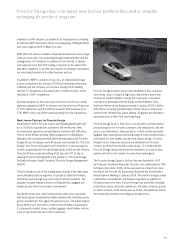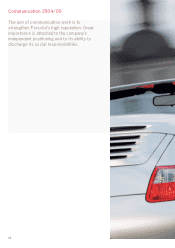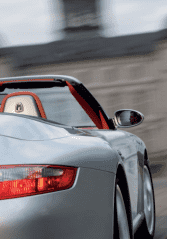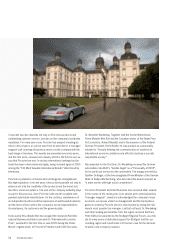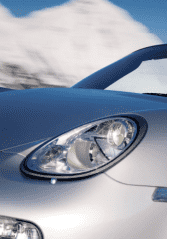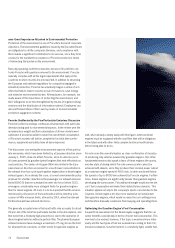Porsche 2004 Annual Report Download - page 66
Download and view the complete annual report
Please find page 66 of the 2004 Porsche annual report below. You can navigate through the pages in the report by either clicking on the pages listed below, or by using the keyword search tool below to find specific information within the annual report.
Museum62
A popular means of accessing the history of Porsche and its vehicles
is the Porsche Museum at the company’s headquarters in Zuffen-
hausen. Up to 80,000 visitors each year succumb to the fascination
of these exhibits, taken from a long, eventful company history.
Unfortunately there is simply too little space to exhibit more than a
small selection of about 25 vehicles, yet the Museum has about
300 in its catalog, all of them worthy of being seen by a larger public.
Customers, historic and thoroughbred car enthusiasts and Porsche’s
stockholders have therefore been asking for a long time for more
exhibition space to be provided.
In July 2004 the Executive Board approved the construction of a
new museum – one of the most spectacular projects in the Porsche
company’s history, valued at a total cost of 50 million Euro. Building
work began in October 2005, and the new museum is scheduled to
open its doors in 2007.
Even the initial announcement of this project was welcomed enthusi-
astically by experts. 170 European architects’ offices asked to be
considered, whereupon Porsche selected ten of them, including
leading architects from Germany, Austria and Switzerland, and invited
them to enter a competition for the order. The winning design selected
by the jury was submitted by Delugan Meissl Associated Architects
of Vienna.
The new museum will be capable of accommodating more than
200,000 visitors annually and is to be open almost all the year round,
seven days a week. As well as the display of approximately 80 vehi-
cles, the public will be able to study the activities of the historic
vehicle workshop. In order to give visitors a full picture of Porsche’s
model history, the exhibits will be changed at regular intervals. The
new Porsche Museum will also have extensive catering facilities
managed by the company, and rooms that can be hired for private
events.
Making the Porsche Tradition Visible
The Museum is to be based on a clearly defined concept that can be
summed up as “content instead of effect”. The new building is to be
the central point at which all historical and contemporary knowledge
concerning Porsche is concentrated and made accessible to the
public. The Museum will extend a welcome to visitors and engage in
a dialog with them; the aim is for it to be a place where a special
corporate culture with a tradition going back more than a century
can be seen and experienced.
Both the function of the Museum and the actual building will thus
represent the company’s guiding principles and its heritage. It is to
be more than just an encounter with interesting exhibits that attempt
to reproduce the era from which they come, though as many of these
as possible will of course be on display. On the contrary, this is to be
a museum in the classic sense of the word: a place where values are
conserved and an educative mission is fulfilled. It will collect knowledge
on important chapters in Germany’s commercial and industrial his-
tory, interpret them and communicate them to its visitors.
Ferdinand Porsche at the wheel of a Lohner-
Porsche with combined gasoline engine
and electric-motor transmission in 1902 –
possibly the world’s first hybrid vehicle.
Ferry Porsche (left) und and his father
Ferdinand Porsche (right) in 1948,
with the Porsche 356 ‘Number One’.
In 1968, the Porsche 907/8 longtail coupes
took the first three places most impressively
in the Daytona 24-Hour Race.



